Autumn Leaves IELTS Reading Answers
6 min read
Updated On
-
Copy link
Table of Contents

Limited-Time Offer : Access a FREE 10-Day IELTS Study Plan!
The Academic passage ‘Autumn Leaves’ is a reading passage that appeared in an IELTS Test.
It contains some of the IELTS reading question types. If you are interested in familiarising yourself with all the question types, don’t hesitate to take an IELTS reading practice test.
Autumn Leaves
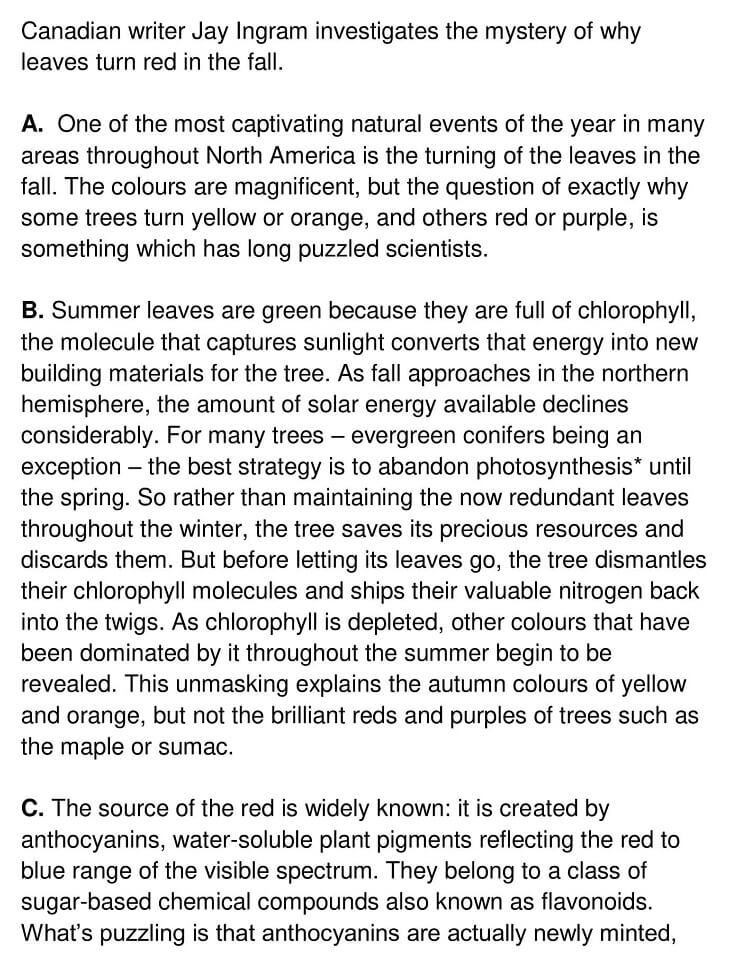
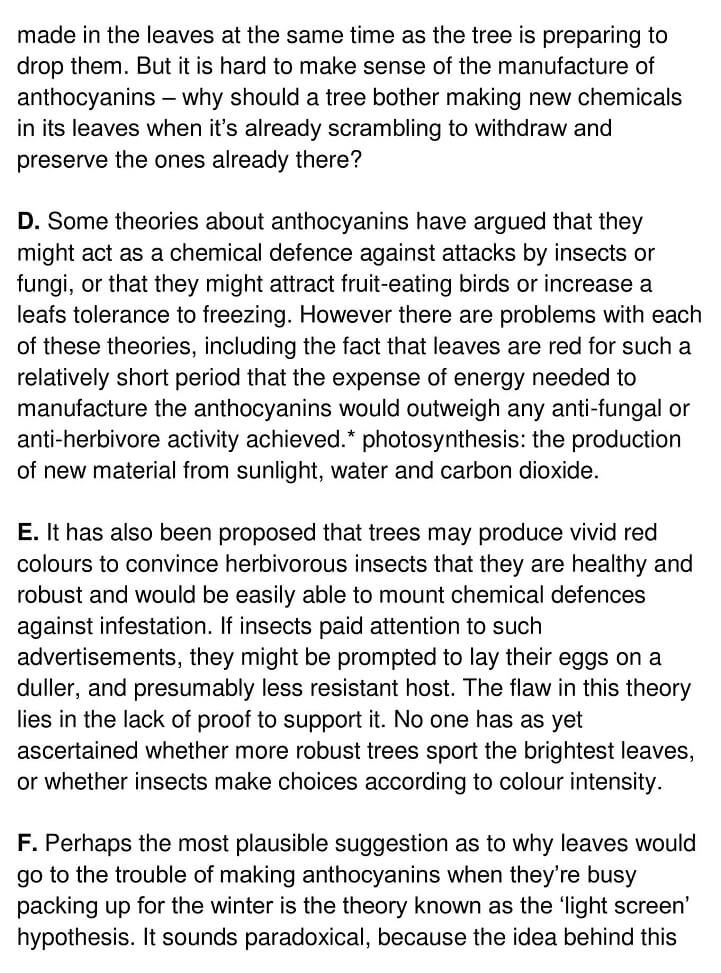
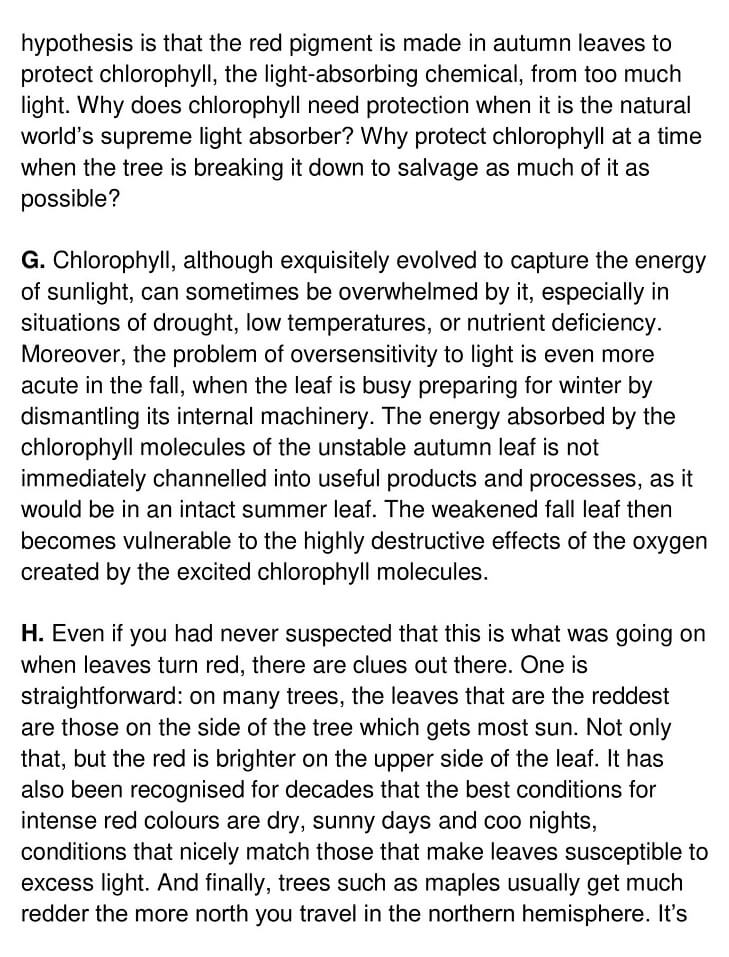
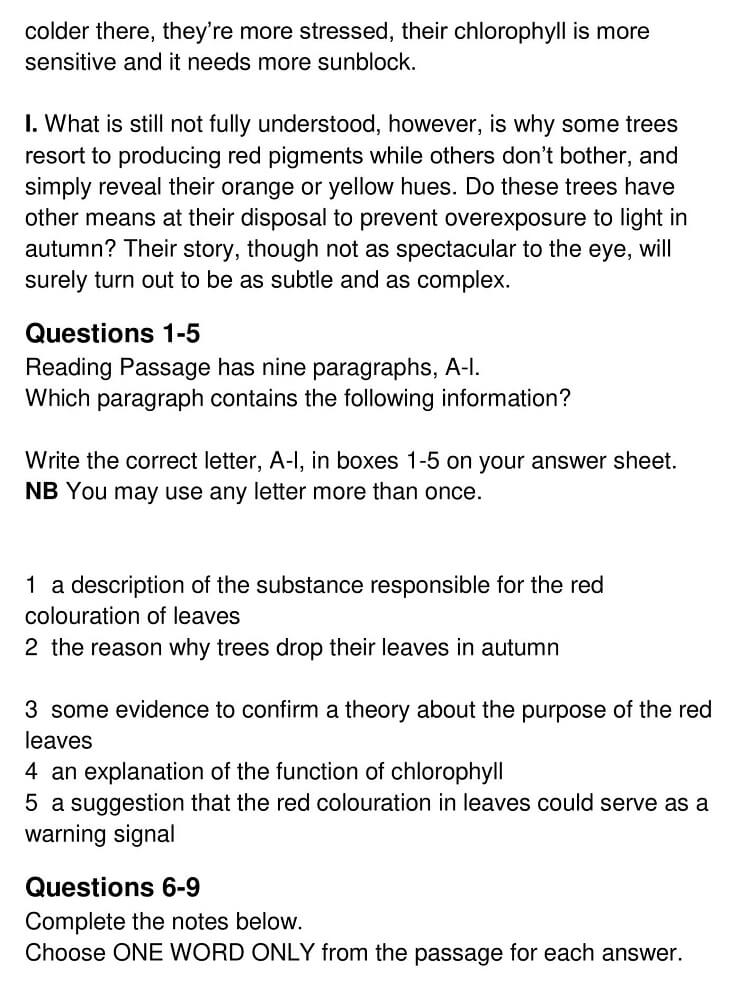
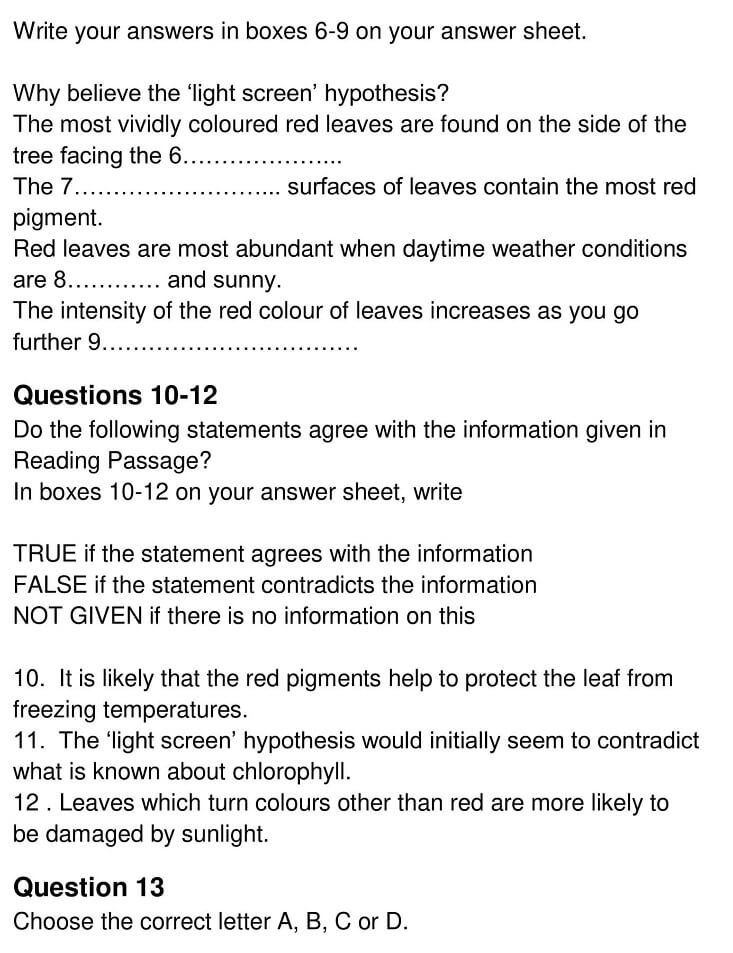
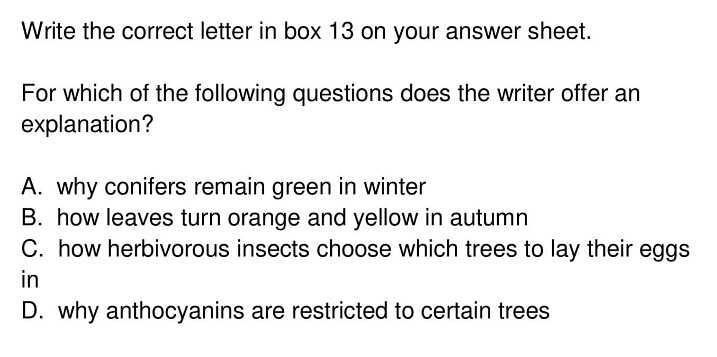
Answers
| Question number | Answer | Explanation |
|---|---|---|
| 1 | C | Paragraph C is about the ‘source of the red colouration of leaves’. It is ‘created by anthocyanins, water-soluble plant pigments’ reflecting the red to blue range of the visible spectrum. They ‘belong to a class of sugar-based chemical compounds’ also known as flavonoids. Anthocyanins are actually ‘newly minted’ which means they are made in the leaves at the same time as the tree is preparing to drop them. Hence, the answer is C. |
| 2 | B | Paragraph B informs that as ‘fall approaches in the northern hemisphere’, the ‘amount of solar energy available declines’ considerably. So, ‘rather than maintaining the redundant leaves’ throughout the winter, the ‘tree saves its precious resources and discards them’ (trees drop their leaves). Hence, the answer is B. |
| 3 | H | Paragraph H mentions some evidence to support the theory about the purpose of the red leaves. Firstly, on many trees, the ‘leaves that are the reddest are those on the side of the tree which gets most sun’. Furthermore, it has also been recognised for decades that the ‘best conditions for intense red colours are dry, sunny days and cool nights’, conditions that nicely ‘match those that make leaves susceptible to excess light’. And finally, ‘trees’ such as maples usually ‘get much redder the more north you travel in the northern hemisphere’. It’s ‘colder there’, they’re ‘more stressed’, their ‘chlorophyll is more sensitive and it needs more sunblock’. Hence, the answer is H. |
Unlock Answers
| 4 | B | Paragraph B states the function of chlorophyll. ‘Summer leaves are green’ because they are ‘full of chlorophyll’, the ‘molecule that captures sunlight converts that energy into new building materials for the tree’. Hence, the answer is B. |
| 5 | E | Paragraph E proposes that ‘trees may produce vivid red colours’ to ‘convince herbivorous insects’ that ‘they are healthy and robust’ and would be ‘easily able to mount chemical defences against infestation’. So, in this way, the red leaves serve as a warning and protect the trees from attack from the herbivorous insects. Hence, the answer is E. |
| 6 | sun | Paragraph H suggests that on many trees, the ‘leaves’ that ‘are the reddest’ are those ‘on the side of the tree’ which ‘gets most sun’ (facing the sun). Hence, the answer is ‘sun’. |
| 7 | upper | Paragraph H points out that the ‘red’ (pigment) is ‘brighter’ on the ‘upper side of the leaf’. Hence, the answer is ‘upper’. |
| 8 | dry | Paragraph H states that it has also been recognised for decades that the ‘best conditions for intense red colours’ are ‘dry, sunny days’ and ‘cool nights’ that nicely match those that make leaves susceptible to excess light.
Hence, the answer is ‘dry’. |
| 9 | north | Paragraph H brings out the fact that ‘trees such as maples’ usually ‘get much redder’ the ‘more north you travel in the northern hemisphere’.
Hence, the answer is ‘north’. |
| 10 | FALSE | Paragraph D states some theories about ‘anthocyanins’ (red pigment) have argued that they might act as a ‘chemical defence against attacks by insects or fungi’, or they might ‘attract fruit-eating birds’ or ‘increase a leaf’s tolerance to freezing’. However, there are problems with each of these theories. So, it is only mentioned that the red pigment increases tolerance to freezing, and does not protect as the question states. Moreover, in paragraph F, it is given that the making of the red pigment when the tree is getting ready to ‘pack for the winters’ ‘sounds paradoxical’, because the ‘idea behind this hypothesis is that the red pigment’ is made in autumn leaves to ‘protect chlorophyll, the light-absorbing chemical, from too much light’. As a result, the writer questions – ‘why does chlorophyll need protection when it is the natural world’s supreme light absorber?’ As the statement contradicts the information, the answer is FALSE. |
| 11 | TRUE | Paragraph F points out that the most plausible suggestion as to the reason leaves would make anthocyanins when they’re busy packing up for the winter is the theory known as the ‘light screen’ hypothesis. It ‘sounds paradoxical’ (contradicts), because the ‘idea behind this hypothesis is that the red pigment’ is made in autumn leaves to ‘protect chlorophyll, the light-absorbing chemical, from too much light’. So, the writer asks the question – ‘why does chlorophyll need protection when it is the natural world’s supreme light absorber?’ As the statement agrees with the information, the answer is TRUE. |
| 12 | NOT GIVEN | In paragraph I, the writer brings out his confusion (‘still not fully understood’) about why ‘some trees resort to producing red pigments while others don’t bother’, and ‘simply reveal their orange or yellow hues’. Their story, though not as spectacular to the eye, will surely turn out to be as subtle and as complex. As no reason is given for the orange and yellow hues of the leaves, the answer is NOT GIVEN. |
| 13 | B | Paragraph B explains the way the leaves turn orange or yellow. It says that ‘as fall approaches in the northern hemisphere’, the ‘amount of solar energy available declines considerably’. For many trees, the ‘best strategy is to abandon photosynthesis’ until the spring. So rather than maintaining the now redundant leaves throughout the winter, the ‘tree saves its precious resources and discards’ the leaves. But before letting its leaves go, the ‘tree dismantles their chlorophyll molecules and ships their valuable nitrogen back into the twigs’. As ‘chlorophyll is depleted, other colours that have been dominated’ by it throughout the summer ‘begin to be revealed’. This unmasking ‘explains the autumn colours of yellow and orange’. Hence, the answer is B. |
Check More IELTS Reading Answers
Also check :
Practice IELTS Reading based on question types

Start Preparing for IELTS: Get Your 10-Day Study Plan Today!
Recent Articles

Nehasri Ravishenbagam

Haniya Yashfeen

Haniya Yashfeen

Haniya Yashfeen




Post your Comments